Laser treatment of retinal diseases
Supra Scan 577 Multi-Spot laser from Quantel
is used in the treatment of retinal diseases. Owing to its properties, the laser shortens the procedure, especially during treatments of large retinal areas, and eliminates complaints of pain. Supra Scan 577 Multi-Spot laser from Quantel is used in the following retinal conditions:
- retinal breaks, which, if untreated, may lead to retinal detachment,
- proliferative diabetic retinopathy with retinal neovascularisation and haemorrhages,
- focal areas of retinal edema occurring in diabetic retinopathy,
- retinal vein occlusion,
- certain vascular anomalies of the retina.
- chronic, recurrent forms of serous chorioretinopathy,
- central retinal edemas occurring in retinal diseases of vascular origin, such as diabetic retinopathy or post-thrombotic lesions.
Lasers used in the treatment of glaucoma, secondary cataract and floaters:
These include neodymium YAG lasers and diode lasers. YAG lasers are used in the treatment of secondary cataract, to make an incision of the opacified capsule after cataract surgery, and also to perform openings in the iris, so called laser iridotomy, and iridoplasty. In the treatment of open-angle glaucoma, the SLT procedure is used, which improves the fluid outflow from the eyeball. In the treatment of glaucoma, diode lasers are also used. OCHO owns the first in Poland laser Cyclo G6 from an American company Iridex. It may be used to perform so called cyclophotocoagulation by a traditional method, used in terminal stages of glaucoma due to a significant risk of complications, but also by a novel and safe method of micropulse cyclophotocoagulation. In almost 70% patients it results in significant reduction of pressure, and it may be repeated and performed in any type and stage of glaucoma. Floaters are also removed with the use of YAG laser with Ultra Q Reflex technology, emitting very short, nanosecond pulses. Both the laser from an Australian company Ellex, and Nd-YAG lasers for iridotomy, iridoplasty, capsulotomy and SLT from renown companies Lumenis, ARC and Quantel Medical are in the permanent offer of OCHO Medical Group of Professor Zagórski.
FAQ
During a basic ophthalmological visit, the patient’s ophthalmological history is taken, and the following examinations are conducted: autorefraction, keratometry, intraocular pressure measurement, visual acuity examination, slit lamp examination and fundoscopic examination.
In most cases, yes. If the doctor decides that some additional examinations are necessary, they may be performed during the visit, or if the doctor does not perform that kind of examinations, the patient is referred to another specialist.
An ophthalmological visit with performance of basic examinations lasts about 20 minutes. In some Centres, the examinations being part of the visit are performed by auxiliary personnel in the examination room. These activities are also included in the time of the basic visit.
Tak, przed wizytą zalecane jest zdjęcie soczewek kontaktowych. Pacjent powinien wziąć je ze sobą na wizytę, gdyż lekarz może poprosić o ich założenie.
The cost of a visit is as per the price list on our website.
The waiting time for a private visit is up to a week. This time may be longer if the patient wants to see a particular specialist. The waiting time for a National Health Fund visit is according to the waiting list. Please call or e-mail us to appoint a specific date.
Yes, but you should inform the doctor that you would like to select glasses or lenses at the beginning of the visit.
Yes, you should normally apply your eye drops.
An ophthalmological visit does not require special preparation. If this is your first visit at the centre, you should have the identity card, which is necessary to create a patient record. Also remember that in most cases it is not allowed to drive a car after an ophthalmological visit.
During the first visit, the doctor takes the patient’s ophthalmological history. If the patient has any ophthalmological documentation from other institutions, it is worth taking it to the visit.
You can return to work/school after the ophthalmological visit, but please remember that if you received eye drops at the visit, your vision may be disturbed and blurred for about 2-3 hours.
Ophthalmological check-ups is an individual matter. The doctor usually informs the patient during the visit when he/she should return. Patients over 50 should have a check-up at least once a year.
If you received pupil-dilating drops at the visit, you must NOT drive a car directly after the visit. You should wait for about 2-3 hours.

